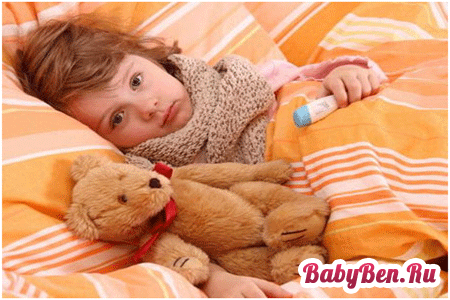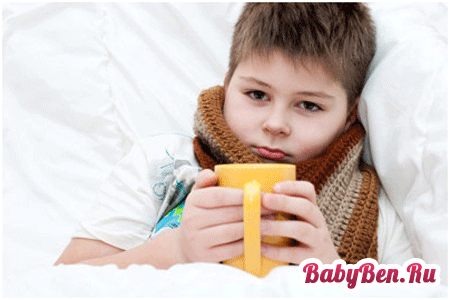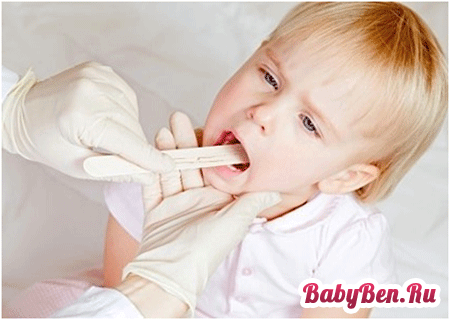
Angina is perhaps the most common childhood disease. A large number of children get sick with angina up to 5 years of age at least once. Older children get sick tonsillitis more often. Children suffering from a chronic form of tonsillitis suffer from angina several times a year. Treatment of tonsillitis in children should proceed under the supervision of a doctor, as this disease causes many undesirable complications.

The content of the article
Angina in children: symptoms and causes
Angina is caused by pneumatic, strept- and staphylococci. They fall into the body of the child:
- airborne droplets;
- of the foci of infection in the body itself;
- from dirty products or dishes.
Bacteria multiply on the tonsils, thereby causing inflammation.
The disease develops rapidly: rises to 39 C, a feverish state is observed, the head hurts, and the main symptom appears immediately - the pain when swallowing, since the tonsils swell from any touch with food sores.
A common source of tonsillitis is an infection in the mouth. Such a source can be both a carious tooth and a regular runny nose, which is often not paid attention to, and not a treated cold. Therefore, it is important to completely treat all childhood infections, avoiding self -medication.

How to treat angina in children
Therapy of tonsillitis in children, depending on the severity of the disease, is carried out either in outpatient or in stationary conditions.
Treatment of angina of the house is carried out, first of all, subject to a strict bed rest, under the supervision of a doctor. The child must take all antibiotics prescribed by the doctor. For the period of the disease, it is necessary to provide the child with separate dishes so that the rest of the household does not infect. It is necessary to constant throat rinsing, warm drink in abundant quantities. Food should not be annoying, warm, easily absorbed.
Antiviral drugs are used for viral origin of angina:
- with herpetic sore throat - Famziklovir, acyclovir;
- with other types of viral sore throat - Kagocel, Arbidol, influenza, etc.
If tonsillitis of bacterial origin, the doctor prescribes antibiotics:
- sulfanilamides such as sulfazine, bacteria;
- in the treatment of streptococcal sore throat - amoxicillin, solotab, flameoxin;
- if the child has an allergy to a penicillin series, cephalosporin preparations such as cephalexin, Sumamed, and macropen are used.
To reduce the temperature, the child as prescribed by the doctor is given to CEFON, Panadol, Ibuprofen. Children under the age of up to a year need to reduce the temperature if it has reached 38 C and higher, and it is best to use rectal candles. You can use other methods of reducing temperature not related to medicines: wiping water, plentiful drink (compotes and fruit drinks made of black currants, cranberries, raspberries).
For local processing, a variety of rinsing solutions, resorption tablets, sprays, decoctions, etc. are used. These products have an antiseptic, analgesic, anti -inflammatory effect.

A sick child should be in a room that must be regularly ventilated and wet cleaned so that the bacteria do not multiply.
If the tonsillitis in the child is difficult, complications arise, the doctor can direct it for treatment to the hospital. There, the child will be under the constant supervision of medical staff, and undergo a full course of treatment using physiotherapy.
What is the danger of angina
Treatment of tonsillitis in children should be complex, complete. Angina is dangerous with its complications - bacteria with improper treatment can penetrate deep into the body and cause heart disease, kidneys, otitis media and rheumatism, and a healthy abscess. Not treated troops provokes blood poisoning. The main thing is to strictly follow the doctor’s prescriptions, in no case should you transfer the disease on the legs.
